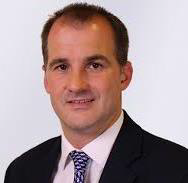Introduction
Multisensory Storytelling (MSST) is a way of including people with additional or complex support needs in the experience of storytelling. Anyone can enjoy a sensory story but they were designed for use with those who experience the world in a sensory way. The approach uses different objects or stimuli which stimulate the five senses, touch, smell, sound, taste and sight. A short, interactive story is told with the support of the stimuli, usually in a small group.
This summer we have been running MSST sessions around Bury as we received some funding from the Lets Live Well project run by Bury Council. We have used this funding to run sessions for both children and adults, and to train staff to continue storytelling once our project has finished. We wanted to run MSST sessions because people with more complex support needs are often excluded from projects and activities in society.
We worked with three of the self-advocates from Bury People who wanted to take part in our project and become the storytellers. The project took place in two parts, training and storytelling. This blog will guide you through our project, how we adapted MSST for the self-advocates and what we have learnt along the way.

Training
The first phase of the project was to train the self-advocates to become storytellers. We met with the self-advocates every Tuesday morning for six weeks to practise and learn how to run a sensory story session.
Weeks 1 & 2
We introduced the idea of telling sensory stories by watching some films. In the films, one storyteller told stories to a group of children with additional support needs. We discussed what we liked and didn’t like about the stories and storytelling and how we might do it differently. It became clear that the advocates were highly attuned to the needs of the participants on the films; they were able to say when the participants looked uncomfortable or distressed. They had clear ideas of how they might handle situations like that and they felt it was important to be respectful of people’s boundaries. They felt it was particularly important for people who were non-verbal and couldn’t verbally say if they didn’t like something.
Weeks 2-4
After some rich discussions, we began to explore some ready-made stories from Bag Books. Bag Books are a company that create fantastic ready-made sensory stories that you can buy and we thought it would be helpful to practise with these stories first. We took it in turns to try out the stories and as we began practising, the group realised that some adaptations to the Bag Books stories might be helpful.
Firstly, we made some adaptations to the Bag Books guidance sheets; Bag Books guidance comes with lots of text. The story is in bold and the instruction is written underneath in italics. We made it easier to read the story by removing unnecessary text, making the writing bigger and putting a picture of each stimulus next to the line of the story. The self-advocates said it made it easier to read and easier to assemble the story in order at the beginning.

We also thought carefully about how to set up the stories so it was easy to tell them in the right order. In our training, the storytellers used crates to order the stories. This was a good idea as it helped give each stimulus a structure. However, the loose objects often got lost in the bottom of the crate and made it more difficult. We found the best way was to use a large table and line all the stimulus up in order. Setting it up in this way made it easier to see what was coming next and it was less fiddly to get the objects out.

Finally, we decided to have two people telling each story. This is a small change but it means that one person does not have to learn the words of the story off by heart and remember how to offer each stimulus to the participant at the same time. We referred to the person reading as the ‘storyteller’ and the person offering each stimulus as the ‘shower’. This change worked so well that we have adopted this style in all of our sensory story sessions going forwards.
It also means that one person is able to see the group as a whole whilst the other is offering 1-1 interaction.
These adaptations seem simple but we have carefully considered what is most helpful for the storytellers. Sometimes it was a case of trial and error and we made lots of changes along the way.
Week 4-6
During the final few weeks, we began to prepare for our storytelling sessions as we had had four weeks booked at Bee Inclusive. This project is for parents of disabled children and we were going to run two sessions there on Mondays for four weeks. We spent some time thinking about which stories we thought would be suitable for children and how we might need to run the session from start to finish. We decided to sing a ‘hello song’ to welcome the children and each of the advocates picked a story to lead. This meant our practises became more focussed as we took it in turns to be the storyteller and the audience.
We thought carefully about what it means to be a storyteller and how we should look after children. From this we created some storyteller guidance sheets to remind us.

Storytelling Sessions
The self-advocates have told the stories to groups of children with disabilities over the summer holidays with the support of Emma and Rhiannon from Total Communication Services CIC. The sessions went well and we have received some lovely feedback, some of which is outlined below.


Reflection
After the project we held an informal reflection with the self-advocates about the project.
We asked them:
• What did you think of the training? What did you enjoy? What could have been better?
• What did you think of the storytelling days? What did you like and what could have been better?
• Did you gain any skills from this project or learn anything new? Did you learn anything about yourself?
And how did this project make you feel?

In terms of the training process, all of the advocates reported that they enjoy the training and they liked the Bag Book stories. They felt they were well prepared to tell the stories. They also felt the adaptations we made during the training process were helpful and made it easier to be a storyteller.

When asked what could have gone better, they felt that they would have liked even more time to practise. Two of the advocates felt they would have liked to practise more Bag Books stories for variety. All of the advocates mentioned wanting more time to write their own stories.

Total Communication Services staff agree that more time would have been helpful to practise. We also would have loved time for the advocates to write and tell their own stories. This was part of the original plan but unfortunately, we ran out of time. We are hopeful that we might receive some more funding in the future to continue this project.
Storytelling days

In terms of the storytelling days, the advocates reflected that they liked working with children and seeing the children become more confident when exploring the items. For one of the advocates, meeting new people was a highlight, alongside being a storyteller as they enjoyed acting and performing for people. One of the advocates commented:
“I just loved it! I liked seeing all the children feel the items and my favourite part was reading”.

They felt all sessions went well and didn’t feel there was anything they could do differently.

Upon reflection, we felt we could have practised what might happen when telling a story with different types of children, as not all children sit down quietly when listening to a sensory story. Our method of ordering the stories on a table caused some disruption during the sessions too as it was difficult for the children to wait for the stimulus they wanted. We have been thinking about how we can work around this for next time.
Learning new skills
Finally, we asked them to think about what they had learnt from this project and if they felt they had gained any new skills.

All said they felt they learned new skills in telling sensory stories and working with children. All of the advocates also felt their confidence had improved, particularly in terms of speaking in front of a group. When we asked how the project made them feel they all said ‘happy’ and agreed it has had a positive impact on their self-esteem. On further reflection one person felt it was the responsibility and the care taking role they enjoyed. They commented:
“I liked looking after the children and other people. It was nice doing that and being the one to do the looking after,
I have never done something like that before and it just made me feel really happy”.

In terms of improvement, all of the advocates wanted more funding to keep the project going as they didn’t want the sessions to end. They would like to tell the stories to even more children next time and they are all hoping they can run another project soon.

In our reflection we felt that we had learned so much about the self-advocates in terms of how hard working they are, what great ideas they have and how much fun and enthusiasm they bring to the story sessions. Overall, we have thoroughly enjoyed this project and we would like to thank Bury Council and the Lets Live Well Project for the funding which allowed us to deliver this service.
Next steps:
• We would like more time to practise with the self-advocates and time to support them in writing their own
multisensory stories. To do this we are going to apply for more funding to run sessions.
• At Total Communication Services CIC we have training course which we run for services. This course guides
participants though the process of telling, planning and writing sensory stories. It also looks at the research,
theory and how to record progress. We would like the self-advocates to be able to deliver training to other
advocacy groups and services which outlines how they can include people as storytellers, as well as participants.
For details of this training please contact info@totalcommunication.org
Author: Rhiannon Matthews
Total Communication Services CIC is a Community Interest Company aiming to promotecommunication, choice, personalisation, and the emotional wellbeing of people withlearning disabilities. We would like to tell you about our trip to London to campaign forcommunication rights with Bury People First, a self-advocacy group from Bury, and ElysiumGateway, a recovery centre in Widnes.

Alison Emma and Rhiannon from Total Communication Services CIC travelled to London with self-advocates and staff from Bury People First to campaign for communication rights for people with learning disabilities.
We arrived on Sunday 26th June 2022 and started our trip with some sight seeing on an open-top bus, followed by some food and drinks, and a good night’s sleep before our trip to Parliament.
Monday 27th June, we had a big breakfast and set off for Parliament. We met up with staff and self-advocates from Elysium Gateway Recovery Centre, and Speech and Language Therapist Neil Thompson from Commtap, who were joining us to campaign for communication. When we arrived, we were taken on a tour of Parliament.

We expected to be trying to stop MPs walking through the lobby to talk to them about our project, the Communication Rights Charter, so we were surprised to be invited to a Committee Room in the building by James Daly, our local MP (Bury North), and to be told that people had appointments booked to come to see us.
The people who came to see us in the Committee Room were:
Robert Halfon: Minister of State for the Department of Education; MP for Harlow
Jeremy Hunt: Former Secretary of State for Health and Social Care; MP for South West Surrey Jake Berry: Minister of State for the Ministry of Housing, Communities, and Local Government; MP for Rossendale David Johnston: Parliamentary Private Secretary at the Department for Education; MP for Wantage Joy Morrissey: Parliamentary Private Secretary to the Prime Minister; MP for Beaconsfield.

We took the poster that we made for the Communication Rights Charter. This is based on Scope Australia’s Communication Bill of Rights. We developed this poster because the self-advocates felt as though the Communication Bill of Rights would work well as a communication policy document, but they didn’t think it was accessible for people with learning disabilities. Self-advocates with learning disabilities were consulted about all of the images in the poster below, and Angie, our graphic artist, made these bespoke images based off the feedback from the self-advocates, to ensure that the images were accessible and meaningful.

We used the opportunity to speak to those who came to visit us about acknowledging the right to communicate as a human right. We expressed that recognising different ways of communicating should be respected and embedded into our culture. We suggested that training in communication should be delivered consistently to people who are responsible for others, including the emergency services, and that quality improvement in services and schools should be monitored and assessed by people with learning disabilities and autism, as usually, they are the ones who have the lived experience of their communication rights not being met.
One of the self-advocates, Rebecca, expressed her passion for consistent access to communication aids for people who need them, and another self-advocate, Matthew, talked about sign-supported speech and how this was important to him.
As our colleagues from Elysium Gateway Recovery Centre also joined us, this was a prime opportunity to talk about the amount of people with autism and learning disabilities who are detained in hospital unnecessarily, a subject of particular interest to Jeremy Hunt, who was actually on his way to talk about this subject at Parliament on the day.

We feel confident that we made an impact in Parliament by speaking up for the right to communicate, and it made us feel proud (and a little emotional!) to hear James Daly say, “you have really started something here today”.
Rebecca ensured that Joy Morrissey took some of our posters with her to Number 10 so that our Prime Minister could see our work and our ambitions for the project.
James Daly took the rest of the posters and ensured that he would pass them along to other MPs to spread the word further.
It would be really helpful if you could share our social media posts so that we can reach even more people, and to sign and share our petition to get communication seen as a human right!
Link to Petition: https://chng.it/KbVqzBw2rp
Facebook:
Total Communication Services CIC
Bury People First
Twitter:
@TotalCommOrg
@BuryPeopleFirst
Updated: Jun 11, 2022
Over lockdown, Total Communication Services CIC met with Bury People First for weekly Signalong sessions.
The self-advocates from Bury People First were extremely interested in people’s right to communicate and were keen to campaign. As a result, the self-advocates were introduced to Scope Australia’s Communication Bill of Rights and asked if they thought it would be a useful tool for a communication policy.
The group liked the idea of the Bill of Rights but didn’t think it was accessible for people with learning disabilities.
This led to a project in adapting the Bill of Rights based on the self-advocates’ feedback to make it accessible for people with learning disabilities.
The group were consulted about the wording of each Right, and what the pictures should look like to represent each Right. Angie, our graphic artist, set to work on developing a set of bespoke images for the adapted Bill of Rights. We also made a film starring the self-advocates, demonstrating each Right. This led to our CommuniCake Conference on 1st October 2021, where we raised awareness of communication and offered a sneak preview of the Bill of Rights work we had done.
More information on the development of the adapted Bill of Rights and the CommuniCake Conference can be found in our downloadable 2020-2021 Social Impact Report (pages 13-16), available here:
At the conference, we met some local MPs who were keen to support us to spread the word about communication and the Bill of Rights. This has led to us securing a date to lobby parliament about the right to communicate, which is where our work on the Bill of Rights will be officially launched on 27th June 2022. We are all very excited!

In the coming weeks leading up to 27th June, we will be sharing information about each Right on our social media pages (Total Communication Services CIC and Bury People First). We would be grateful if these posts could be shared far and wide to help us raise as much awareness about people’s right to communicate as possible!
The self-advocates will also be very happy to deliver training about the Bill of Rights and people’s right to communicate where it is of interest.
Please check out our social media pages for more updates:
Total Communication:
Facebook: Total Communication Services CIC
Twitter: @TotalCommOrg
Instagram: tc_org
Bury People First:
Facebook: Bury People First
Twitter: @BuryPeopleFirst
































